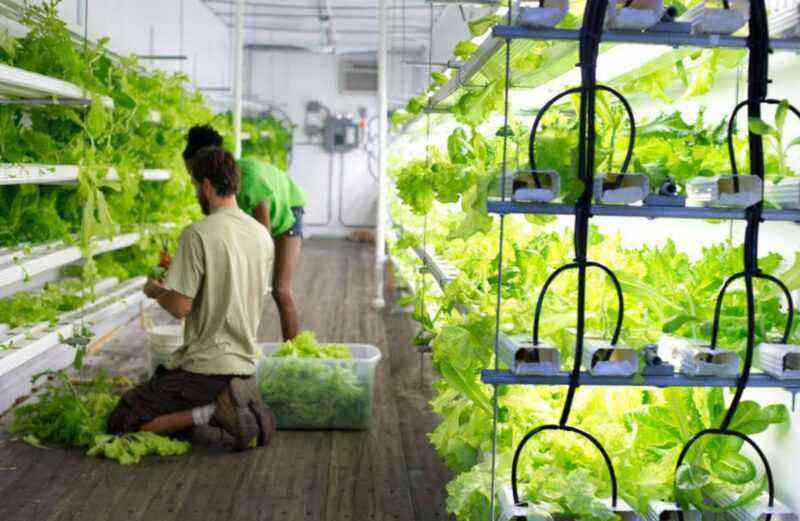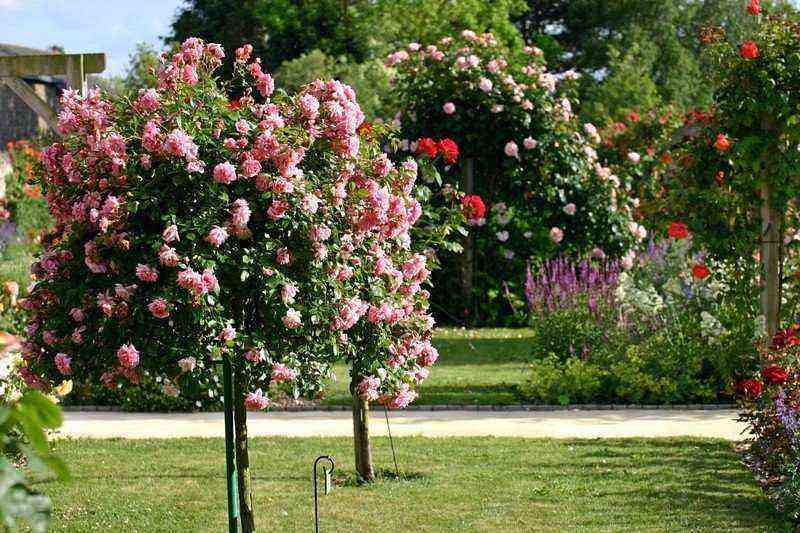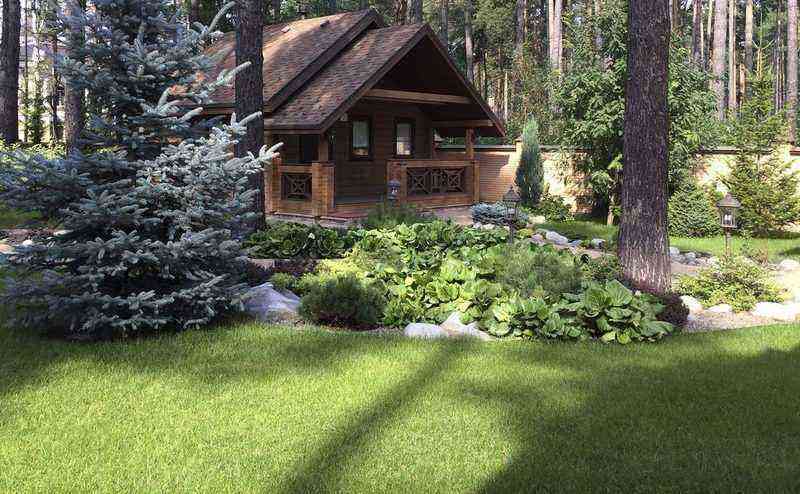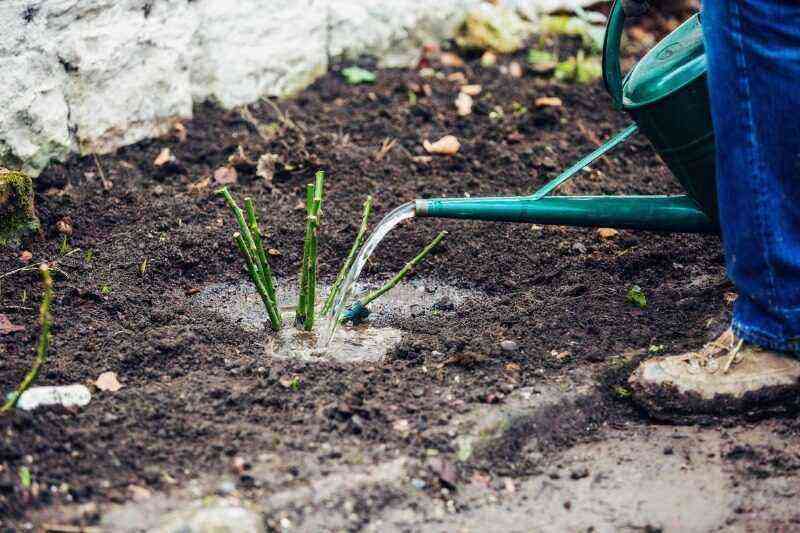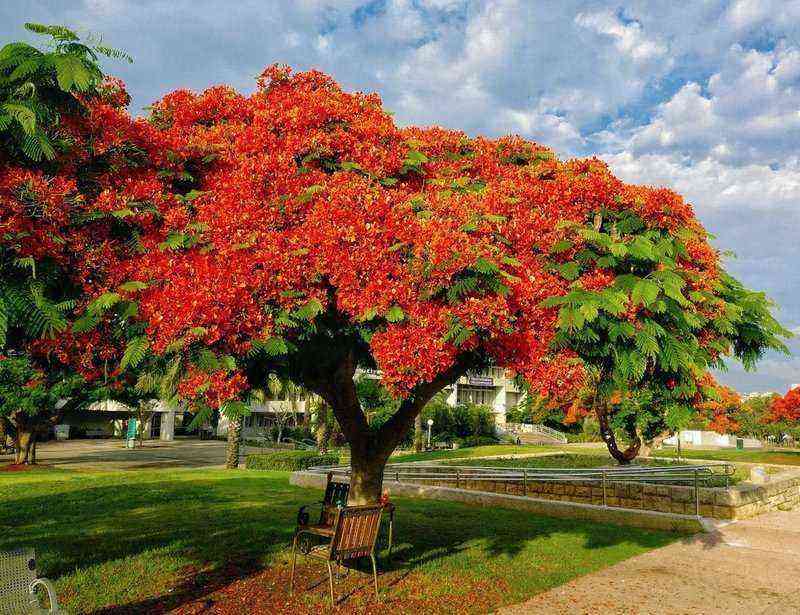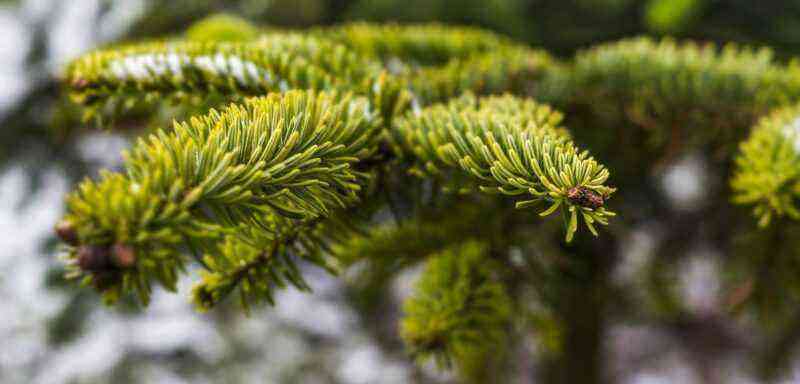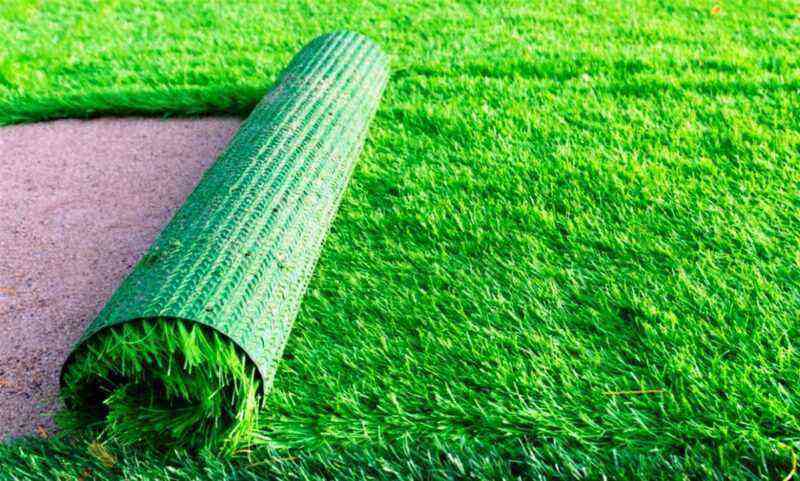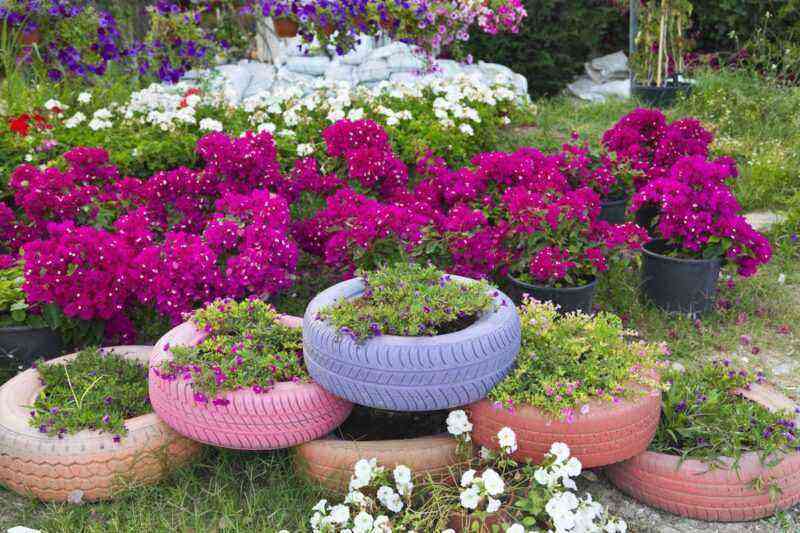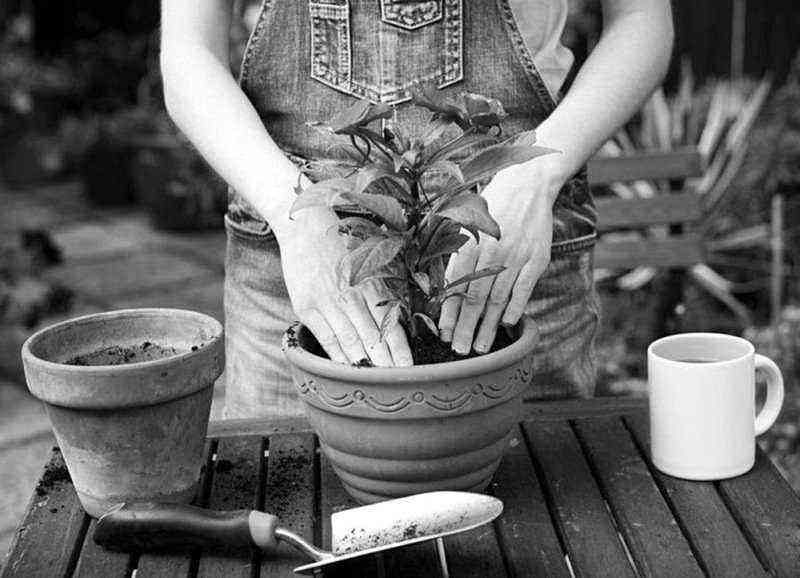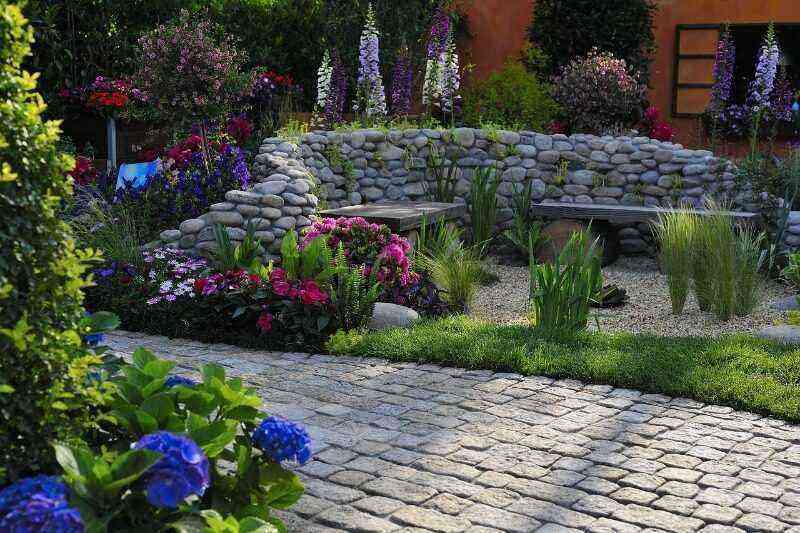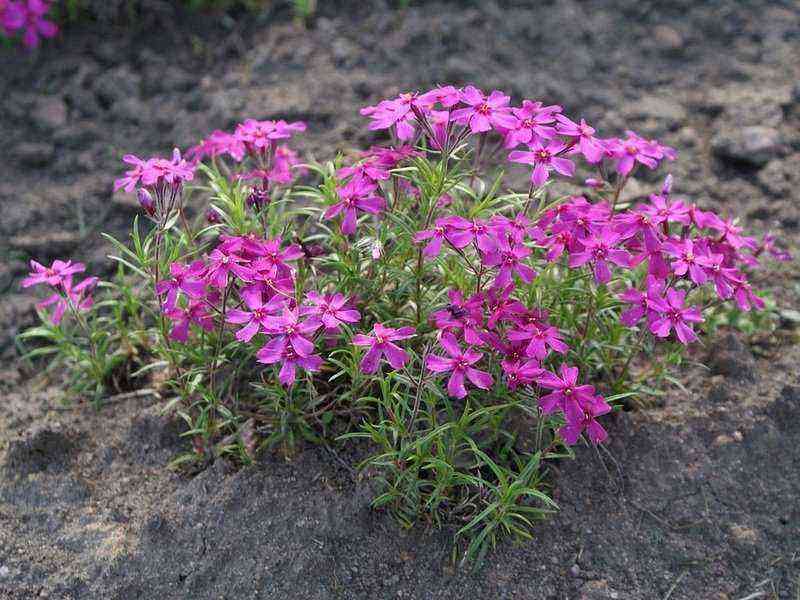Well-groomed grass in a summer cottage looks no less aesthetically pleasing than flower beds. In addition, if you carry out all the work on planting the lawn correctly, then in the future it will be very simple to care for the lawn. A beautiful lawn will not only become part of the decorative design of the site, but will also bring a lot of benefits. For a year, half a hectare of planted grass absorbs about 40 tons of dust, which means that you will breathe healthy air. The second plus is that the humidity will increase, which in summer will help the owners to endure the heat more easily. Every summer resident can make a lawn with his own hands, because this does not require special equipment and deep knowledge of an agronomist. The basic rule here is to do everything slowly and efficiently.
Prior to the commencement of excavation, the type of lawn is determined. It is selected taking into account the further use of the grass area, because the device of the lawn for outdoor games and for the patio area can be radically different in the quality and variety of cereals that make up the herbal mixtures. There are several types of lawn grasses, so be clear about what you need before going to the store.
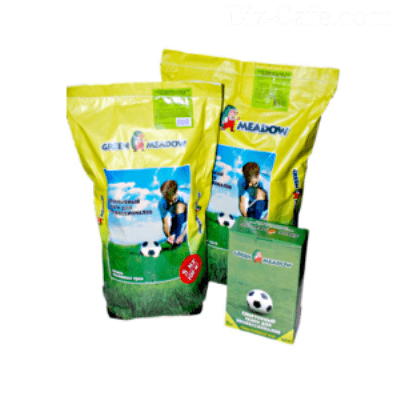
When buying a lawn mixture, read the instructions on the package, which indicates for what purposes such a lawn can be used.
Sports turf
It is sown in places where a playground, a children’s area or an area for walking pets (for example, if someone is raising dogs) is planned. Sports blends are formulated with trample-resistant herbs so that bald spots won’t appear on your lawn over time. Such lawns are dense, tough and unpretentious. True, a more durable substrate is built under them in order to avoid tearing the grass.

For playgrounds and play areas, it is recommended to sow sports mixtures that can withstand constant trampling.
English (parterre) lawn
This lawn is the complete opposite of a sports lawn. It is not meant for movement, but for contemplation. The mixture is made up of expensive delicate herbs that require good soil, constant care and mowing, are afraid of shady places and trampling. In the landscape, the English lawn looks very luxurious and expensive, but this is a purely decorative corner, in which picnics and tea drinking are excluded.

Along with beautiful aesthetic parameters, the English lawn is very gentle, demanding to care for and does not tolerate movement on it.
Lawn and park lawn
A garden and park lawn in the country with your own hands is the easiest to make. The grains that make up it are unpretentious, tolerate well both the shade and the scorching sun’s rays, and grow on poor soils. Therefore, for recreation areas, patios, areas near the pools, this option is most often chosen.
And instead of a classic lawn, you can grow an unpretentious lawn from Irish moss. Read about it:
Meadow (Moorish) lawn
If you like wild grasses and flower-strewn meadows, then choose this type of lawn. It will be a lawn blooming all summer long with a bright palette of colors. You can create a mixture for a meadow lawn yourself by picking up plants so that they bloom alternately throughout the summer season.
A simpler option is to buy a ready-made Moorish lawn, where grasses have already been selected that get along well together, do not drown out each other and are distinguished by bright colors. Naturally, such lawns are rarely mowed (only in order to remove faded plants and allow the next generation to germinate). But it is not recommended to walk on them either, because high, about 10 cm grass will crumple underfoot and are unlikely to restore their previous appearance.
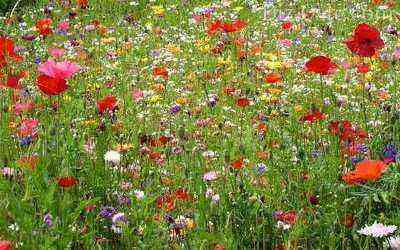
Meadow lawns, especially Moorish, are great for rustic styles of site decoration and look naturalistic
Versatile lawn
Versatile lawns are created very quickly, because they use ready-made rolls of grass. They are sold with turf and quickly take root in a new place. With the help of roll materials, they equip any zones on the site in which movement is planned. As a decorative, parterre lawn, this option is not suitable, because unpretentious tough grasses that do not have high aesthetic qualities are used for its cultivation. It should be borne in mind that such a lawn will cost you much more than sowing grasses for a lawn, because rolled strips require special soil preparation and the ability to properly lining them.
You can learn about the laying technology and the rules for growing roll lawn from the material:
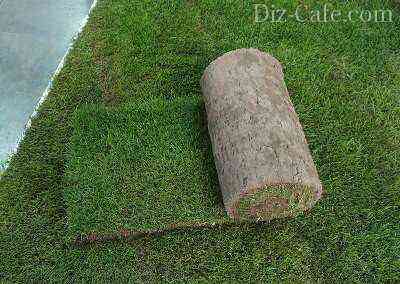
Rolled lawns are a versatile type of lawn (albeit expensive!), On which you can create recreation areas, playgrounds
When dividing the landscape of the site into certain zones, keep in mind that not all lawn mixtures will grow equally well where you allocated a place for them.
- So, the English lawn needs complete openness, the absence of shade and winds.
- Any grass will not grow normally in an area of constant shadow, which happens in the immediate vicinity of buildings.
- If you are planning to sow a lawn under an orchard or ornamental trees, then within the radius of the crown the lawn has little chance of survival. Firstly, the root system of more powerful trees will take most of the food. Secondly, the branches will provide a large amount of shade that interferes with the processes of photosynthesis. As a result, the grass will look pale. You will have to either sacrifice the lower branches of the trees and cut them, or refuse to plant grass in this place.
- If the summer cottage is located in a low-lying waterlogged area, then the roots of the grasses will constantly rot. The lawn does not like waterlogging, so you will have to make high-quality drainage. True, there are mixtures of herbs that grow even with stagnant water, but even they are not shown a constant excess of moisture.
- If there are elevation differences on the site, then in the places of transitions the soil is subject to erosion and leaching. You need to smooth the slopes so that their steepness does not exceed 30˚ and additionally reinforce with a mesh that will hold the soil without letting it fall.
- You should not make a lawn path in a place where people and cars are constantly moving, for example, from a gate to a house. Trampling the same track every day, you will compact the earth so much that the grass will lose access to oxygen to the roots and “suffocate”. Even sports mixtures will not work in this case, because they are designed for heavy traffic across the entire site, and not in one narrow lane. If the desire to keep the area green is so great, then place strips of tiles or wood blocks between the lawn so that you can step on them, and not on the grass.
It is advisable that the preparation of an approximate project of your future lawn took place in the winter. Then, with the beginning of spring, you will immediately begin earthwork. Lawn mixtures show the best survival rate in early spring, when the ground is saturated with moisture and there is no intense heat. If the moment is missed, then you should not sow the lawn in the summer. Wait until the autumn days, when the rains saturate the soil, and then start sowing. But do not be late: before winter, the young lawn should leave after 1-2 mows.
You can learn more about how to prepare your lawn for winter in the material:
Preparing the soil for planting seeds
The order of work is as follows:
- Clearing. First of all, the future site is cleared of all kinds of construction waste and stones. Stumps are uprooted, low-growing branches on trees are cut.
- Weed control. Then comes the time of weed control. They must either be weeded out by hand, destroying them along with the roots, or by chemical treatment. In the first case, you will spend a lot of physical strength on the destruction of weeds, but you can immediately proceed to the next stage of work. With chemical weeding, you will have to wait at least a week until the drug starts destructive. That is why it is recommended to treat the soil with chemicals in the fall. Then the weeds will disappear during the winter, and the chemicals themselves will have time to disintegrate into safe elements and will not harm when planting the lawn.
- Creation of a drainage system. If your site is in a lowland, then you need to rid the land of waterlogging. To do this, drain it before digging up the lawn. After the rain, mark the places where the water accumulates and dig deep holes (about a meter) into them. Line the bottom of the holes with broken brick, then with coarse gravel, and over it with a layer of sand. Leave 40 cm on fertile soil. After planting, the water will go into the soil and through the soil into the drainage pit.
- Site leveling and digging. On uneven areas, it is necessary to level the terrain so that the lawn has an even horizontal. To do this, pull the cords to the pegs at different ends of the site and look at the level of the differences. Pits fall asleep, bumps are cut off. After that, the entire site is dug up. The roots of perennial weeds, debris and stones are removed. Sandy soils are fertilized with black soil or peat. Too fat is diluted with sand.
- Tamping and loosening. Before planting seeds for the lawn, you need to tamp the soil tightly, walking on it with small steps or using a board. They put it on the edge of the plot and jump on it until the ground subsides. Then they move the board and continue until the entire site is trampled. You can also roll a thick log. As soon as you step on the ground, and it does not buckle under your feet, the soil is ready to plant. It remains to loosen it slightly with a rake and sow it with a lawn mixture with the density recommended in the instructions.
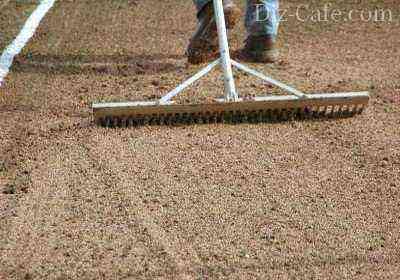
After the earth is rammed, it is necessary to stir the upper layer with a rake so that the seeds have access to air and moisture.
Grass sowing process
If you are planting seeds with your own hands, it is difficult to make the lawn as smooth as a brush because the grass is not spread evenly. As a result, some places will grow densely, while others will grow weak. To achieve uniformity, a portion of seeds, calculated per meter of space, is mixed with the same volume of fine sand and then sown. It is optimal to sow with a manual seeder, but it is not always available on sale.
Sprinkle the seeds with earth and roll them up with a log so that the birds do not peck. If the soil is dry, it is recommended to water it from a fine sprinkler under a weak water pressure, so as not to wash out the crops.
The material on lawn care technology will also be useful:
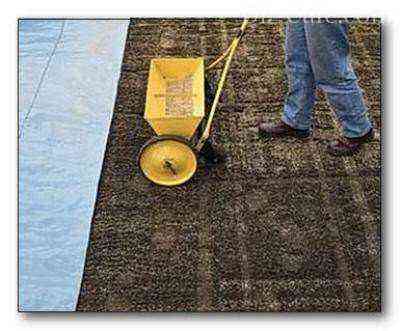
The manual seeder helps to use lawn seeds more economically and at the same time the planting quality is more uniform.

The seeds are rolled with a special roller, and if not, then they are slapped with a board or carefully trampled down with flat-soled shoes
It remains to wait for the shoots and enjoy the beautiful lawn. By the way, weeds will crawl along with the blades of grass. But they are no longer afraid of the lawn. After one or two mowing, annuals disappear without a trace, and the grass becomes a juicy, thick carpet.
